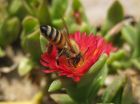The effects of poor eating habits persist even after diet is improved
New research published in the Journal of Leukocyte Biology suggests that these changes to the behavior of the immune system are persistent and can continue even after diet is improved
2014-11-03
(Press-News.org) Almost everyone knows that improving your eating habits will most likely improve your health. What most people may not know, however, is that the effects of poor eating habits persist long after dietary habits are improved. In a new report appearing in the November 2014 issue of the Journal of Leukocyte Biology, scientists use mice to show that even after successful treatment of atherosclerosis (including lowering of blood cholesterol and a change in dietary habits) the effects of an unhealthy lifestyle still affect the way the immune system functions. This change in function occurs largely because poor eating habits alter the way genes express themselves, including genes related to immunity. This change in gene expression (epigenetics) ultimately keeps the risk of cardiovascular disorders higher than it would be had there been no exposure to unhealthy foods in the first place.
"I hope that this study demonstrates the importance of diet-induced changes in the epigenome and encourages further research into the interaction between dietary patterns, DNA methylation and disease," said Erik van Kampen, a researcher involved in the work from the Division of Biopharmaceutics at the Leiden Academic Centre for Drug Research at Leiden University in Leiden, The Netherlands.
To make their discovery, scientists used two groups of mice that had an altered gene making them more susceptible to developing high blood cholesterol and atherosclerosis. These mice were either fed a high-fat, high-cholesterol diet (Western-type diet, WTD) or a normal diet (chow). After a long period of feeding, bone marrow was isolated from the mice and transplanted into mice with a similar genetic background that had their own bone marrow destroyed. The recipient mice were left on chow diet for several months, after which the development of atherosclerosis in the heart was measured. The number and status of immune cells throughout the body and epigenetic markings on the DNA in the bone marrow also were examined. They found that DNA methylation, an epigenetic signature, in the bone marrow was different in mice that received bone marrow from the WTD-fed donors compared to the mice receiving bone marrow from chow-fed donors. Furthermore, these mice had large differences in their immune system and increased atherosclerosis.
"We've long known that lifestyle and nutrition could affect immune system function," said John Wherry, Ph.D., Deputy Editor of the Journal of Leukocyte Biology. "The ability of nutritional history to have durable affects on immune cells demonstrated in this new report could have profound implications for treatment of diseases with immune underpinnings. The length of such effects will be critical to determine and it will be interesting to examine the effects of drugs that can modify epigenetics."
INFORMATION:
Erik van Kampen, Armand Jaminon, Theo J. C. van Berkel, and Miranda Van Eck. Diet-induced (epigenetic) changes in bone marrow augment atherosclerosis. J. Leukoc. Biol. November 2014 96:833-841; doi:10.1189/jlb.1A0114-017R. http://www.jleukbio.org/content/96/5/833.abstract
The Journal of Leukocyte Biology publishes peer-reviewed manuscripts on original investigations focusing on the cellular and molecular biology of leukocytes and on the origins, the developmental biology, biochemistry and functions of granulocytes, lymphocytes, mononuclear phagocytes and other cells involved in host defense and inflammation. The Journal of Leukocyte Biology is published by the Society for Leukocyte Biology.
ELSE PRESS RELEASES FROM THIS DATE:
2014-11-03
Feeding honey bees a natural diet of pollen makes them significantly more resistant to pesticides than feeding them an artificial diet, according to a team of researchers, who also found that pesticide exposure causes changes in expression of genes that are sensitive to diet and nutrition.
"Honey bees are exposed to hundreds of pesticides, while they are foraging on flowers and also when beekeepers apply chemicals to control bee pests," said Christina Grozinger, professor of entomology and director of the Center for Pollinator Research, Penn State. "Our study demonstrates ...
2014-11-03
More than half of ships involved in the 100 largest oil spills of the past three decades were registered in states that consistently fail to comply with international safety and environmental standards, UBC researchers have determined.
The research also found one-third of the current global oil tanker fleet are flying the flags of states with poor marine safety records—what they term "flags of non-compliance."
"Vessels flying flags of non-compliance create more problems than the rest of the global fleet," observes Rashid Sumaila, co-author of the study and director ...
2014-11-03
For decades, maple syrup producers have eyed the weather to help understand spring sugar yields. But new research in the journal Forest Ecology and Management reveals a more valuable metric for understanding – and even predicting – syrup production: how many seed helicopters rained down from the trees the year before?
"Weather affects how much sap will flow out of the tree, but sap volume is only one piece of the puzzle," says Josh Rapp, who as a postdoctoral fellow with Elizabeth Crone, associate professor of biology at Tufts University and senior author ...
2014-11-03
Karyotype is usually a stable feature of each species since chromosomal changes, if they occur, may contribute to the formation of barriers between populations causing the establishment of reproductive isolation and speciation as possible consequences. Indeed, mating between individuals with different karyotypes frequently produces hybrids with a reduced fertility (or sterile) due to mis-segregation of chromosomes during meiosis.
Despite the occurrence of this general rule, it seems that some animal species failed their examination in genetics and adopt different rules. ...
2014-11-03
MADISON, Wis. – Scientists today disclosed a new method to convert lignin, a biomass waste product, into simple chemicals. The innovation is an important step toward replacing petroleum-based fuels and chemicals with biorenewable materials, says Shannon Stahl, an expert in "green chemistry" at the University of Wisconsin-Madison.
Lignin is the substance that makes trees and cornstalks sturdy, and it accounts for nearly 30 percent of the organic carbon in the biosphere. Stahl, senior author of a new report in the journal Nature, notes that lignin is a waste product ...
2014-11-03
Scientists at the European Molecular Biology Laboratory (EMBL) in Heidelberg, Germany and collaborators from Heidelberg University, in the joint Molecular Medicine Partnership Unit, have obtained the first structure of the immature form of HIV at a high enough resolution to pinpoint exactly where each building block sits in the virus. The study, published online today in Nature, reveals that the building blocks of the immature form of HIV are arranged in a surprising way.
"The structure is definitely different from what we'd expected," says John Briggs from EMBL, who led ...
2014-11-03
A new policy paper led by University of York scientists, in partnership with Proforest, aims to increase awareness among researchers of the High Conservation Value (HCV) approach to safeguarding ecosystems and species.
The HCV approach is widely used in sustainable land management schemes to identify important ecosystems and species to conserve, but is little known in academia and the scientific evidence base is lacking.
The policy paper encourages new research into the effectiveness of the HCV process and greater knowledge exchange between scientists, HCV users and ...
2014-11-03
If chronic lymphocytic leukemia patients with a good or poor prognosis could be identified already at the time of diagnosis, physicians would have better possibilities to adjust their therapeutic and follow-up strategies. Now researchers at Uppsala University, together with international colleagues, have discovered a new correlation between specific molecular features of the disease and subgroups of patients with different prognosis.
The results have been published in the journal Lancet Haematology.
Chronic lymphocytic leukemia (CLL) is an incurable tumour disease ...
2014-11-03
Some MRSA bugs in UK hospitals can be traced back to a type of bacteria found in farm animals, a study suggests.
A strain of drug-resistant bacteria carried by some livestock – the MRSA strain Staphylococcus aureus CC398 – has also been found in patients, researchers say.
People and animals generally harbour distinct variants of CC398, which the team say evolved from the same original bacteria. However, the CC398 strain found in livestock can be transmitted to humans, and the study shows that this has happened on many occasions.
The study provides new ...
2014-11-03
Using the Very Large Telescope Interferometer (VLTI) in near-infrared light [1], the team of astronomers observed 92 nearby stars to probe exozodiacal light from hot dust close to their habitable zones and combined the new data with earlier observations [2]. Bright exozodiacal light, created by the glowing grains of hot exozodiacal dust, or the reflection of starlight off these grains, was observed around nine of the targeted stars.
From dark clear sites on Earth, zodiacal light looks like a faint diffuse white glow seen in the night sky after the end of twilight, or ...
LAST 30 PRESS RELEASES:
[Press-News.org] The effects of poor eating habits persist even after diet is improved
New research published in the Journal of Leukocyte Biology suggests that these changes to the behavior of the immune system are persistent and can continue even after diet is improved



